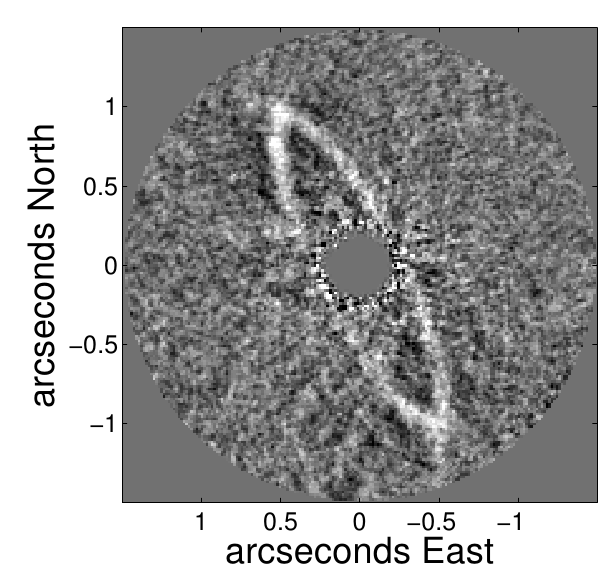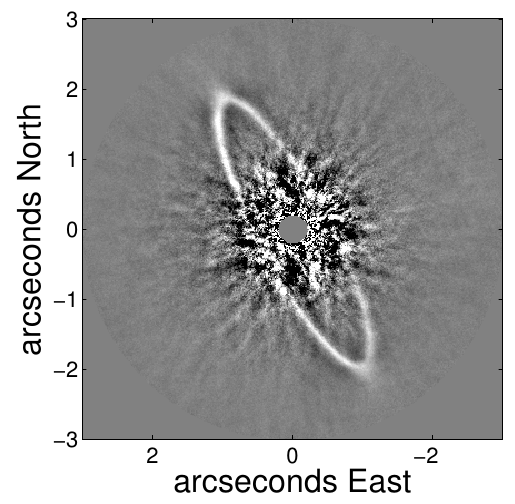

Abstract:
We present resolved images of the HR 4796A debris disk using the Magellan adaptive optics system paired with Clio-2 and VisAO. We detect the disk at 0.77 microns, 0.91 microns, 0.99 microns, 2.15 microns, 3.1 microns, 3.3 microns, and 3.8 microns. We find that the deprojected center of the ring is offset from the star by 4.76 ± 1.6 AU and that the deprojected eccentricity is 0.06 ± 0.02, in general agreement with previous studies. We find that the average width of the ring is 14+3-2% (11.1+2.4-1.6 AU), also comparable to previous measurements. Combining our new scattered light data with archival Hubble Space Telescope images at ~0.5-2 mum, along with previously unpublished Spitzer/MIPS thermal emission data and all other literature thermal data, we set out to constrain the chemical composition of the dust grains. After testing 19 individual root compositions and more than 8400 unique mixtures of these compositions, we find that good fits to the scattered light alone and thermal emission alone are discrepant, suggesting that caution should be exercised if fitting to only one or the other. When we fit to both data sets simultaneously, we find that silicates and organics are generally the most favored, while large abundances of water ice are usually not favored. These results suggest the HR 4796A dust grains are similar to interstellar dust and solar system comets, though improved modeling is necessary to place better constraints on the exact chemical composition of the dust.
Rodigas, T. J., et al. “On the Morphology and Chemical Composition of the HR 4796A Debris Disk”
ApJ, 798, 96, 2015 ADS arxiv preprint